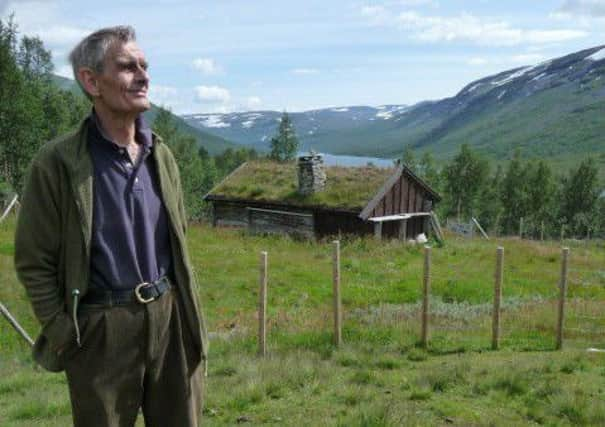Obituary: Jan Magnus Fladmark, Professor of Heritage Management, Countryside Commission for Scotland, Largs Viking Festival patron and a founder of the Thor Heyerdahl Institute


Scotland first seeped into Jan Magnus Fladmark’s consciousness during the dark days of the Second World War when his Norwegian homeland was occupied by Nazi forces.
His mother’s family were seafarers from Alesund and as a boy he was aware of relatives involved in the heroic but perilous seaborne resistance operation known as the Shetland Bus.
Advertisement
Hide AdAdvertisement
Hide AdDisguised as fishing boat crew, a succession of operatives braved hazardous North Sea crossings transporting agents, weapons, supplies and refugees between Shetland and Norway under cover of darkness.
Fladmark, who could recall the German tanks and convoys, witnessed some of those escapees concealed in a pig sty awaiting their chance to flee and heard stories of such flights across the sea which continued throughout the occupation.
It would be nearly 20 years before he sailed off, Scotland-bound, on a passage that marked the start of a diverse and industrious life that he dedicated to developing the country’s cultural heritage. It encompassed the introduction of a degree in Heritage Management, key roles at the Countryside Commission for Scotland, patronage of the Largs Viking Festival and the founding of the Thor Heyerdahl Institute in his native Norway.
Born in Romsdal, Fladmark, on Norway’s west coast, where his family had farmed for centuries in the shadow of the Troll Wall, Europe’s highest vertical drop, he left school early after a teacher branded him unsuitable for academic study. After a brief spell studying horticulture at Gjermundnes Agricultural College he changed course entirely and went to work as a junior photo journalist on the Sunnmørsposten newspaper. It was there that a colleague encouraged him to return to studying and he succeeded in passing his exams.
Following two years’ military service training as an officer in the Norwegian Army, he left for Scotland and further studies in Edinburgh where he financed evening classes in English by working as a clippie on the buses.
By 1961 he was studying architecture and town planning at Edinburgh College of Art and, while also working part-time, designed the original Ptarmigan Observation Restaurant on Cairngorm. On graduating met his future wife Caroline, an art student. They married in 1967, the same year he joined the Scottish Office where he worked on national planning guidelines.
A six-year spell followed as a lecturer in town and country planning at Edinburgh University before, in 1976, he became research and development director, and later assistant director of planning, at the Countryside Commission for Scotland.
There he promoted access to the countryside, worked on green belt policy and was especially proud of his part in establishing a countryside ranger service, national scenic areas, a system of regional and country parks, and the Central Scotland Woodlands Initiative.
Advertisement
Hide AdAdvertisement
Hide AdHe also helped to set up a network of cycling trails, was involved in projects to save the old canal system and was responsible for the Southern Upland Way, Britain’s first coast-to-coast walking trail.
Then in 1993 he was made a professor at Robert Gordon University (RGU) in Aberdeen where he started a new MSc course in Heritage Management looking at the reciprocity of culture and enterprise. The thinking behind this was elucidated in his inaugural lecture, published as The Wealth of a Nation: Heritage as a Cultural and Competitive Asset. He later helped to adapt the degree menu for teaching at a graduate school in Moscow associated with the Russian Academy of National Economy.
While at RGU, where he was a generous, inspiring mentor and entertaining raconteur, he enjoyed organising a series of international conferences on heritage and culture which were later edited into six books. His other publications include Heritage and Identity: Shaping the Nations of the North and Tomorrow’s Architectural Heritage: Landscape and Buildings in the Countryside, both of which he co-authored.
Fladmark, also founding chairman of the Countryside Around Towns Forum, was made an Honorary Fellow of Royal Incorporation of Architects Scotland in 1996 for his contributions to national policy.
The following year, as a devotee of Mahatma Gandhi, he was proud to be invited to deliver a Freedom Lecture at the Nehru Centre during the 50th anniversary celebrations of Indian independence.
Two years later he co-founded the Thor Heyerdahl Institute in Larvik, Norway in honour of the great Norwegian explorer and writer. And, passionate about Viking history, he was delighted to be made a patron of the Largs Viking Festival in 2008.
He had long since moved from Edinburgh to Auchtermuchty, Fife, where he collected old books, antiques and enjoyed gardening.
He also loved running in the nearby countryside – he had completed 13 marathons around the UK – and in his younger days had been involved in skiing, skating, archery and parachuting.
He is survived by his wife Caroline, four children, Freya, Olga, Judy, Frederick and five grandchildren.
ALISON SHAW